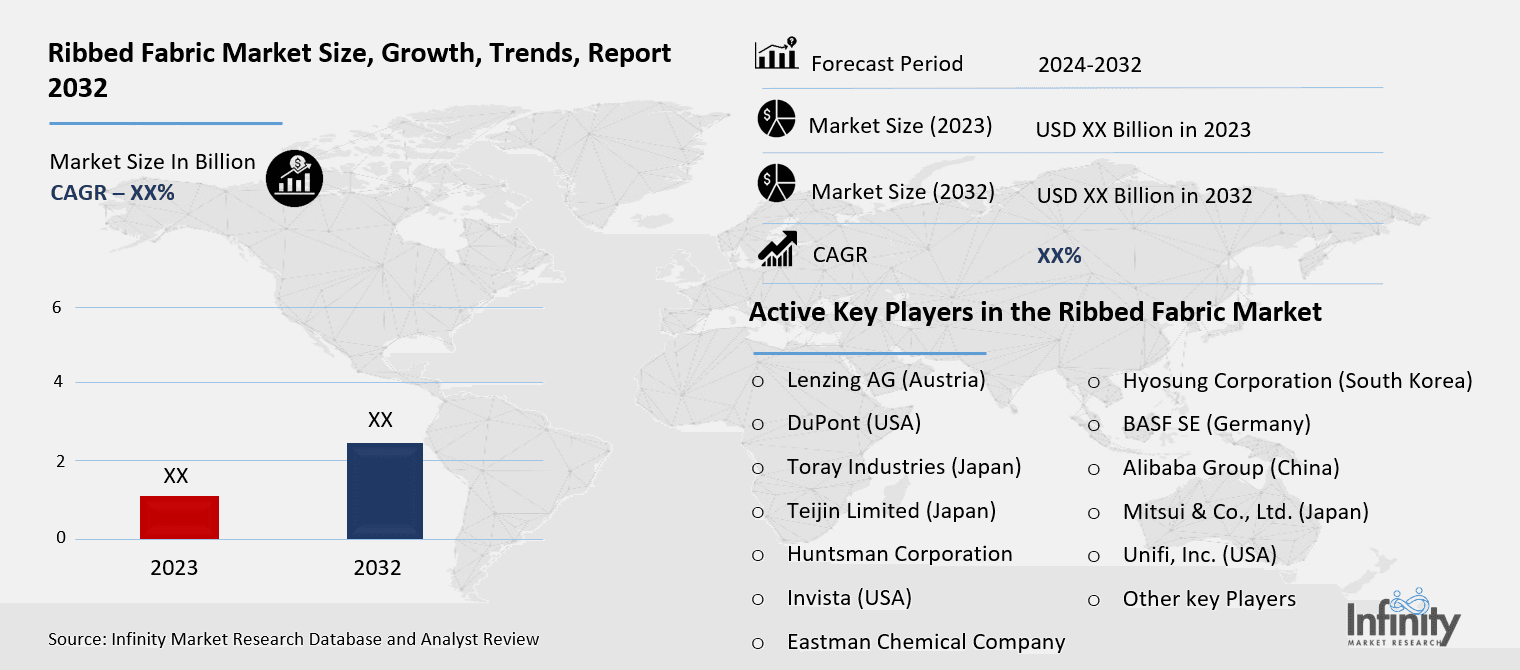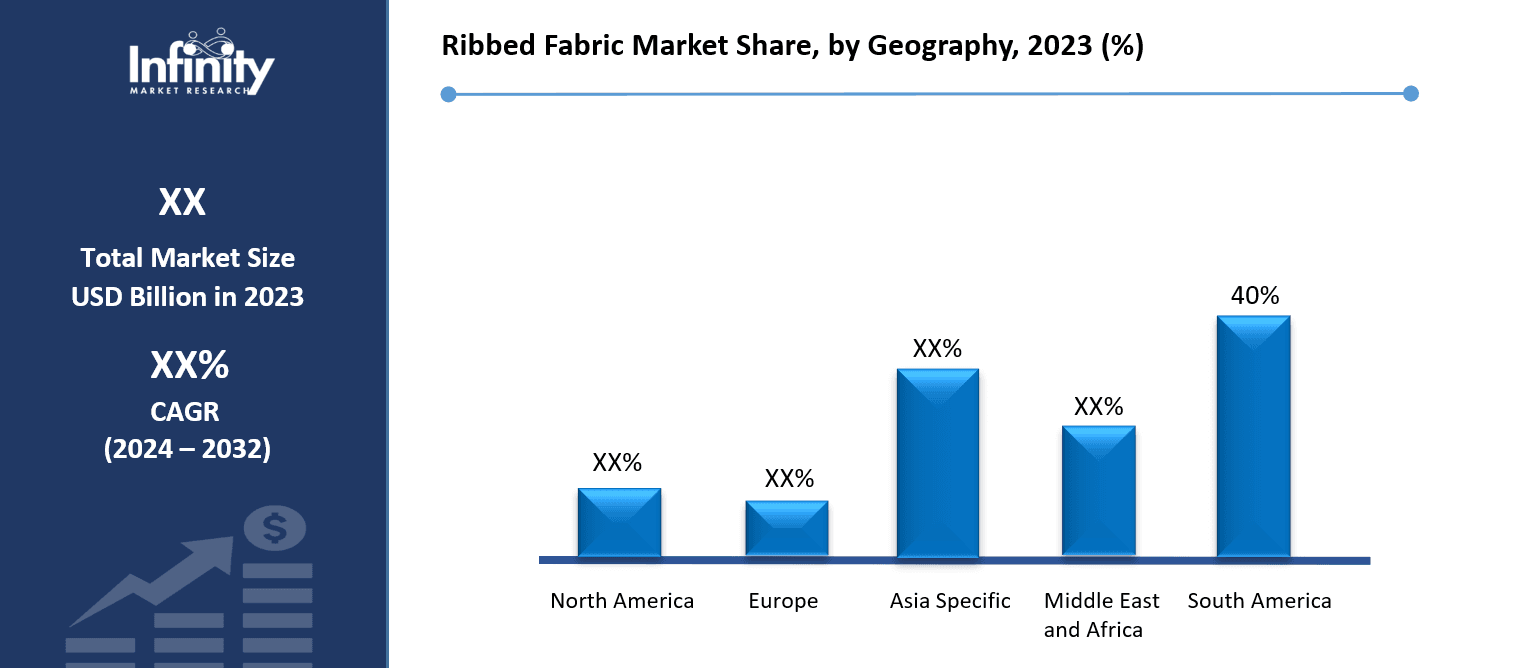
🔐 Secure Payment Guaranteed
Safe checkout with trusted global payment methods.
🌟 Why Choose Infinity Market Research?
At Infinity Market Research, we dont just deliver data — we deliver clarity, confidence, and competitive edge.
In a world driven by insights, we help businesses unlock the infinite potential of informed decisions.
Here why global brands, startups, and decision-makers choose us:
Industry-Centric Expertise
With deep domain knowledge across sectors — from healthcare and technology to manufacturing and consumer goods — our team delivers insights that matter.
Custom Research, Not Cookie-Cutter Reports
Every business is unique, and so are its challenges. Thats why we tailor our research to your specific goals, offering solutions that are actionable, relevant, and reliable.
Data You Can Trust
Our research methodology is rigorous, transparent, and validated at every step. We believe in delivering not just numbers, but numbers that drive real impact.
Client-Centric Approach
Your success is our priority. From first contact to final delivery, our team is responsive, collaborative, and committed to your goals — because you re more than a client; you re a partner.
Recent Reports
Global Myopia Control Lenses Market Report 2025-33
Hyaluronic Acid-based Dermal Fillers Market Report
Ribbed Fabric Market
Ribbed Fabric Market Global Industry Analysis and Forecast (2024-2032) By Type(Cotton, Polyester, Nylon, Wool, Silk, Others), By Application(Apparel, Home Furnishing, Upholstery, Industrial Fabrics, Others), By End-User( Fashion Industry, Textile Industry, Interior Design, Automotive, Others) and Region
Feb 2025
Manufacturing
Pages: 136
ID: IMR1775
Ribbed Fabric Market Synopsis
Ribbed Fabric Market acquired the significant revenue of XX Billion in 2023 and expected to be worth around USD XX Billion by 2032 with the CAGR of XX% during the forecast period of 2024 to 2032.
The ribbed fabric market denotes the manufacture and sale of garments containing fabrics where a ribbed or raised texture has been formed. Many of these fabrics are applied in the clothing and apparel, home textiles, furnishing and automotive fabrics, as well as industrial textile segments. Ribbed fabrics provide strength, softness, and appearance, hence applied in many apparel wears including shirts, dresses and other accessories and home products including upholstery and industrial products.
Ribbed fabrics hold an important position in the textile market and there causes of its development are its textural characteristics and versatility. Ribbed fabric construction involves manipulation of the yarns tension during the weaving or knitting in such a way that there results to lines or ridges on the fabric face. Such fabrics are available in many types, such as cotton, polyester, nylon, wool, silk and others all with their respective characteristics. These fabrics are quite flexible therefore found in fashion as well as other different industries including home furnishing. The apparel industry is one of the biggest users of ribbed fabrics, because such materials give not only a look, but also comfort and freedom of movement. This is one of the reasons why the fabric is incredibly versatile for developing items like t-shirts and leggings, and sweaters.

Over the years, there has been a great demand with ribbing fabrics as more people are embracing the athletic wear and casual wear brands that emphasize on comfort and style. Due to their ability to be breathable, stretchy, and to allow for wicking of moisture, fabrics with ribs are particularly popular when they are made from cotton and polyester and used in activewear. Moreover, the home furnishing segment has incorporated ribbed fabric in cushion, bed lines, upholstery and other products where texture is influencing the appearance of the product. The use of ribbed fabrics in industries has also experienced steady growth in especially areas of high usage of such fabrics, mechanical in particular automotive and medical. Due to its distinctive characteristics of high structure yet soft elasticity, ribbed fabrics can be especially applied in industrial use like conveyors, protective outfits, etc.
Currently, sustainability is a critical factor in the textile industry and the ribbed fabric market targets sustainable materials and production. Manufacturers are sourcing on recycled fibers and using environmentally friendly methods to address the new market call for products made sustainably. It is also anticipated that the increase in awareness among population as well as greater concern for the environment will soon become an important driver of further development in the sphere of ribbed fabric. These giveaways like anti microbial treatment and water proofing has taken ribbed fabrics into more specialist areas like healthcare, sports and outing.
Ribbed Fabric Market Trend Analysis
Trend: Increased Demand for Sustainable Ribbed Fabrics
One primary trend prevailing the ribbed fabric market is the growth in the consumption of sustainable and green fabrics and materials. With increased awareness of the global environment, consumers are demanding natural or recycled fiber-based products; this has propelled the increase of sustainable ribbed fabrics. Organic cotton, recycled polyester and biodegradable fibers are a few of the many technological improvements manufacturers are introducing to their products. Not only does this eliminate the negative externalities associated with textile production but consumers are also increasingly concerned with sustainability.
But not only substances have been incorporated into eco-friendly production, some clothes are also being produced through environmentally friendly processes such as waterless dyeing and energy efficient production. These innovations are anticipated to reduce the impact of reb fabric production but still afford durability and quality of the fabric as consumers ‘demand. As sustainable elements are incorporated into the procurement process, those organizations that adopt to these tendencies will be able to achieve a competitive advantage in the ribbed fabric business.
Opportunity: Expansion in Emerging Markets
There is potential to grow in such new markets as they offer a huge potential for affordable and quality ribbed fabrics. It is expected that the demand for both fashion as well as functional textiles with rising disposable income along with rapid urbanization of countries in Asia-Pacific, Latin America and Middle Eastern contributes make up the demand for textile products. With these markets evolving, there is continuously rising demand for many forms of fabrics such as ribbed fabrics for apparel as well as home furnishings.
Secondly, as the middle income INAs increase in these regions, there is a trend towards the pursuit of fashionable and comfortable clothing, which can be adjusted to converted ribbed fabric production for a large number of people. To appreciate the potential impact of these new markets, one only has to looks at the fact that there is a high demand in stylish and fashionable apparels as well as home furnishings at relatively lower price points. There will be growth for manufacturers who can provide cheaper but sustainable ribbed fabrics in these regions.
Driver: Rising Demand for Comfortable and Versatile Apparel
Comfort and versatility are some of the forces that have helped drive the ribbed fabric market deeper into the market. Tubular knits or fabrics with ribs especially those that have cotton and synthetic fiber such as polyester have high elasticity and affordability and ease of ventilation, which is good for casual / activewear. Continuing with fashionable fabric trends, ribbed fabrics are the most sought after fabrics today with the athleisure boom and the increased use of stretchy clothes. This trend is most apparent in the NA and Europeans, where customers want both comfort & style – not necessarily in that order though.
In addition, flexibility of texture and endurance of the shape can make ribbed fabrics popular for every day wear as well as sports wear. According to market data, improved comfort and fashion appeal of wear accessories have long-term positive impact on sales of ribbed fabrics Therefore, manufacturers are more concerned with product design and fabric quality that corresponds to demands of consumers.
Restraint: Fluctuating Raw Material Prices
One of the biggest limiting factors for ribbed fabric is the fluctations in price of raw materials mainly including cotton and synthetic fibres like polyester. These are sticky-price items, partly due to supply chain risks such as disruption of supply routes, production risks in agriculture, and global trade balance. When the price of the raw materials is on the high side, the producers of the ribbed fabric might also experience high cost of production, thus, they might had to pass the cost onto the consumers. It may even see demand erosion by virtue of issuing a cheaper product, in order to compete with end-products likely to be characteristic of regions sensible to price changes.
Also, the use of petroleum based fibers such as polyester subjects the manufactures to the fluctuations in oil market. This causes its clients particularly manufacturers to face a problem of unstable profit margins due to change in raw material costs as well as unforeseen events such as shortages of the raw materials. There is still a strongly expressed factor of price control and management of raw material cost volatility in the ribbed fabric market and it still remains an issue for controlling costs for competitors.
Ribbed Fabric Market Segment Analysis
Ribbed Fabric Market Segmented on the basis of type, application and end user.
By Type
o Cotton
o Polyester
o Nylon
o Wool
o Silk
o Others
By Application
o Apparel
o Home Furnishing
o Upholstery
o Industrial Fabrics
o Others
By Region
o North America (U.S., Canada, Mexico)
o Eastern Europe (Bulgaria, The Czech Republic, Hungary, Poland, Romania, Rest of Eastern Europe)
o Western Europe (Germany, UK, France, Netherlands, Italy, Russia, Spain, Rest of Western Europe)
o Asia Pacific (China, India, Japan, South Korea, Malaysia, Thailand, Vietnam, The Philippines, Australia, New-Zealand, Rest of APAC)
o Middle East & Africa (Turkey, Bahrain, Kuwait, Saudi Arabia, Qatar, UAE, Israel, South Africa)
o South America (Brazil, Argentina, Rest of SA)
By Type, Cotton segment is expected to dominate the market during the forecast period
The most common categories of rib fleece fabric are those made of ribbed fabrics getting from cotton and polyester. They offer excellent comfort, economic value, breathability, and softness, and are on high demand for use in apparels which include t-shirts, dresses, and wear at home clothes. Cotton is also cost effective and eco friendly due to its natural fibers which will be suitable for customers considering the environment. Furthermore, many forms of cotton ribbed fabrics are easily dyeable and finishable so that they can be given numerous textures and patterned.
Polyester ribbed fabrics are more durable, moisture management and non-wrinkle that is perfect for activewear and performance wear styles. It has been commonly used in markets ranging from luxury, underscoring the easy processing and low cost of polyester from its synthetic base material. Thus polyester is less likely to fade in comparison to cotton and is great for bold and vivid colourful clothing designs. The polyester ribbed fabrics remain in high demand, especially for deliberate activewear and fashion purposes due to the material functionality.
By Application, Apparel segment expected to held the largest share
A number of industries utilise ribbed fabrics but the clothing industry is the largest consumer of the fabrics. Ribbed fabrics are very much popular in fashion industry to design different types of dress materials such as t-shirts, dress materials, leggings, sweaters etc due to the comfort point of view with elasticity and holds the shape of the dress material. Due to this, the ribbed fabrics are worn casually and can also be worn formally since the textural feel brings out the appearance of the wears. The usage demand of ribbed fabrics in the apparel sector is directly related to the current clothing trend for comfortable and functional clothing products and application such as athleisure and activewear.
Besides apparel, ribbed fabrics are gradually penetrating the home furnishings and upholstery product segments. Ribbed fabric also enhances decorative features of textile goods and accessories including furniture cushion, curtains as well as sofa covers. They may be easily degraded but they have some good carrying capacity and strength that makes them appropriate for use in furnishing where not only the looks but also the strength or sturdiness is important. Rib structures also in industrial textiles: the automotive, conveyor belt, and medical textiles industries all use modac and end-use fabrics.
Ribbed Fabric Market Regional Insights
North America is Expected to Dominate the Market Over the Forecast period
As of now, it is clear that North America holds the largest share for ribbed fabric consumption owing to the increasing demand for clothes, footwear and other accessories that are made of ribbed fabric,Varied climate conditions across the globe has led to an increased production of garments, and ribbed fabric has proved to be the best material for almost every climate across North America and with an added push to produce more sustainable fabrics to meet the needs of the consumer The industry of textile manufacturing in the region has been well-developed and the region possesses the necessary manufacturing capacities, which makes the region one of the leaders in the world’s market of ribbed fabric. There is a rising demand for better quality ribbed fabrics in North America especially fabrics manufactured using natural and recycled material due to the emerging trend in sustainable fashion and home textile applications.
In addition, the increased production of key manufacturers and distributors from North America, highly developed retail sale market, and diversified consumers’ business level are also strengthened by this region. The rise of athleisure and activewear in the United States and Canada continues to boost the requirement for ribbed fabrics, such fabrics are perfect for performance wear. Per the research findings, North America emerges as the most dominant region in the global market due to its factors such as a sound demand for its products and sustainable growth.
Ribbed Fabric Market Share, by Geography, 2023 (%)

Active Key Players in the Ribbed Fabric Market
o Lenzing AG (Austria)
o DuPont (USA)
o Toray Industries (Japan)
o Teijin Limited (Japan)
o Huntsman Corporation (USA)
o Invista (USA)
o Eastman Chemical Company (USA)
o Hyosung Corporation (South Korea)
o BASF SE (Germany)
o Alibaba Group (China)
o Mitsui & Co., Ltd. (Japan)
o Unifi, Inc. (USA)
o Other key Players
Global Ribbed Fabric Market Scope
|
Global Ribbed Fabric Market | |||
|
Base Year: |
2023 |
Forecast Period: |
2024-2032 |
|
Segments Covered: |
By Type |
· Polyester · Nylon · Wool · Silk · Others | |
|
By Application |
· Home Furnishing · Upholstery · Industrial Fabrics · Others | ||
|
By Region |
· North America (U.S., Canada, Mexico) · Eastern Europe (Bulgaria, The Czech Republic, Hungary, Poland, Romania, Rest of Eastern Europe) · Western Europe (Germany, UK, France, Netherlands, Italy, Russia, Spain, Rest of Western Europe) · Asia Pacific (China, India, Japan, South Korea, Malaysia, Thailand, Vietnam, The Philippines, Australia, New-Zealand, Rest of APAC) · Middle East & Africa (Turkey, Bahrain, Kuwait, Saudi Arabia, Qatar, UAE, Israel, South Africa) · South America (Brazil, Argentina, Rest of SA) | ||
|
Key Market Drivers: |
· Rising Demand for Comfortable and Versatile Apparel | ||
|
Key Market Restraints: |
· Fluctuating Raw Material Prices | ||
|
Key Opportunities: |
· Expansion in Emerging Markets | ||
|
Companies Covered in the report: |
· Lenzing AG (Austria), DuPont (USA), Toray Industries (Japan), Teijin Limited (Japan), Huntsman Corporation (USA), Invista (USA), Eastman Chemical Company (USA), Hyosung Corporation (South Korea), BASF SE (Germany) and Other Major Players. | ||
📘 Frequently Asked Questions
1. What would be the forecast period in the Ribbed Fabric Market research report?
Answer: The forecast period in the Ribbed Fabric Market research report is 2024-2032.
2. Who are the key players in the Ribbed Fabric Market?
Answer: Lenzing AG (Austria), DuPont (USA), Toray Industries (Japan), Teijin Limited (Japan), Huntsman Corporation (USA), Invista (USA), Eastman Chemical Company (USA), Hyosung Corporation (South Korea), BASF SE (Germany) and Other Major Players.
3. What are the segments of the Ribbed Fabric Market?
Answer: The Ribbed Fabric Market is segmented into Type, Application, End User and region. By Type, the market is categorized into Cotton, Polyester, Nylon, Wool, Silk, Others. By Application, the market is categorized into Apparel, Home Furnishing, Upholstery, Industrial Fabrics, Others. By End-User, the market is categorized into Fashion Industry, Textile Industry, Interior Design, Automotive, Others. By region, it is analyzed across North America (U.S.; Canada; Mexico), Eastern Europe (Bulgaria; The Czech Republic; Hungary; Poland; Romania; Rest of Eastern Europe), Western Europe (Germany; UK; France; Netherlands; Italy; Russia; Spain; Rest of Western Europe), Asia-Pacific (China; India; Japan; Southeast Asia, etc.), South America (Brazil; Argentina, etc.), Middle East & Africa (Saudi Arabia; South Africa, etc.).
4. What is the Ribbed Fabric Market?
Answer: The ribbed fabric market denotes the manufacture and sale of garments containing fabrics where a ribbed or raised texture has been formed. Many of these fabrics are applied in the clothing and apparel, home textiles, furnishing and automotive fabrics, as well as industrial textile segments. Ribbed fabrics provide strength, softness, and appearance, hence applied in many apparel wears including shirts, dresses and other accessories and home products including upholstery and industrial products.


🔐 Secure Payment Guaranteed
Safe checkout with trusted global payment methods.
🌟 Why Choose Infinity Market Research?
- Accurate & Verified Data:Our insights are trusted by global brands and Fortune 500 companies.
- Complete Transparency:No hidden fees, locked content, or misleading claims — ever.
- 24/7 Analyst Support:Our expert team is always available to help you make smarter decisions.
- Instant Savings:Enjoy a flat $1000 OFF on every report.
- Fast & Reliable Delivery:Get your report delivered within 5 working days, guaranteed.
- Tailored Insights:Customized research that fits your industry and specific goals.




